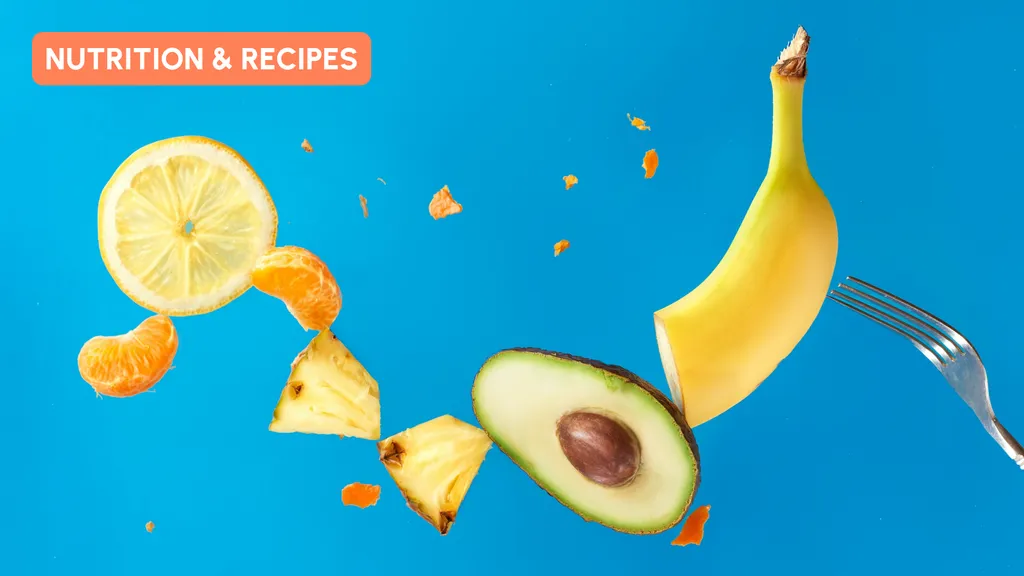Intermittent Fasting: What to Eat to Fuel Your Fast

CMO @ Fastic

With Fastic, millions of people have achieved their desired weight, overcome disease and regained their quality of life.
Here at Fastic, we’ve helped over 27 million people to better their health with intermittent fasting. Each one of those people has different needs, different goals and even different dietary preferences, all looking for the perfect combination of foods to fuel their day.
Unlike typical diets, intermittent fasting focuses on when you eat, rather than how much you eat. But this still leaves the commonly asked question, “What should I eat while intermittent fasting?”
Whether you’re a fasting-newbie seeking inspiration or a seasoned-pro looking to refresh your refrigerator, a nutritious diet is a significant key to good health, and we’re here to help!
While there are no rules as to what you should or shouldn’t be eating during your eating window, there are some factors to take into account that could boost your progress and make the journey a little smoother. In this blog, we’ll be discussing the various food groups, as well as foods to munch and foods to moderate.
We hope you’re hungry for knowledge, it’s time to dig in!
Types of Intermittent Fasting
Intermittent fasting is the practice of intentionally setting meal timings, ingesting nothing but water or unsweetened black teas or coffee during your fasting period. While fasting can be an amazing tool for almost everyone, we’re all unique, so it’s important to find the right type of intermittent fasting for your needs, goals and lifestyle.
Some common types of intermittent fasting include:
16:8:
The most popular daily fasting method, involving a fast of 18 hours, followed by an eating window of 8 hours. For example, starting your fast at 8pm and breaking it the next day at 12 noon.
5:2 Plan:
Eating conventionally for five days of the week, then fasting for two non-consecutive days, for example, Monday and Thursday. Fasting days will typically include only 500-600 calories.
O.M.A.D: A method of consuming only one large meal throughout the day.
There are many types of fasting for you to choose from. But whichever plan you pick, fuelling your body within your eating window is your key to fasting success. No matter your dietary preferences or requirements, we’re here to help. Our expertly supported app has over 400 recipes to help you feel fantastic! Get a taster for some mouthwatering plates here.
Stopped salivating yet? Let’s keep reading.
What to Eat on Intermittent Fasting
Intermittent fasting isn’t a diet in the traditional sense, so there are no specific foods that you have to eat or avoid while intermittent fasting. However, there are certain types of foods that are recommended to eat while on your intermittent fasting journey.
When intermittent fasting, because you will go extended periods of time without food, you want to fill up on feel-good-foods in your eating window that keep you fuller for longer, energized through your day and help to progress towards your goals.
It’s important to have a balanced and varied diet, including proteins, healthy fats and sustainable carbohydrates, as all macronutrients are vital to health and well-being.
Protein:
(e.g. lean meats, dairy, tofu, beans)
The building blocks of the cells, these powerhouses help to grow, heal and maintain lean muscle mass, keep your brain healthy and your stomach full
Fats:
(e.g. meats, dairy, nuts, oils)
While they often get a bad reputation, healthy (unsaturated) fats are vital for keeping your hormones happy, organs protected and energy levels strong
Carbohydrates:
(e.g. wheats, fruits, starchy vegetables)
A great source of energy, carbs also help to maintain blood sugar levels and provide necessary fiber to your diet for gut health efficient digestion
Including all of your nutrients, we recommend that you base your diet around whole-foods (foods with only one ingredient, like an apple, rice or chicken breast). These foods do not contain any sneaky additives, and help to keep your stomach satisfied. Let’s take a look at some!
Foods to Eat on an Intermittent Fasting Diet
After 16+ hours of fasting, your tummy is probably rumbling, so breaking your fast is your first step to fuelling the fire. We recommend starting with something light, easily digestible and packed with protein, for extra power! Whether you prefer sweet or savory, your fast breaker should help to ease your body back into action, rather than shock it! This will help to avoid bloating, digestive irritation or sluggishness.
Suggestions:
Wide Awake Smoothie
Veggies and Hummus
Superfood Breakfast
Throughout your eating window, it’s important to ingest enough calories. This will help to reduce your risk of hormonal imbalances, hypoglycemia or fatigue. Depending on your goals and your lifestyle, your diet may differ from others. If you’re very active, or an avid gym-goer, don’t forget your post-workout meal: aiding recovery and reenergizing you for your next session.
Suggestions:
Super Shrimp Stir Fry
Steak and Avocado Salad
Asian Garlic Tofu
Still peckish? Snacks don’t have to sabotage your goals! Nibbling on healthy snacks throughout the day can be a good way to level blood sugars, help to manage cravings or overeating and to get some extra nutrients in.
Suggestions:
Tasty Trail Mix
Peanut and Date Smoothie
Greek Yogurt with Honey
Oooh, sounds tasty, right? Healthy food needn’t be boring and intermittent fasting isn’t necessarily restrictive! As you can see, Fastic supports users in enjoying the food that’s fuelling their day. We always encourage you to find what works for you, adjusting your intake as your journey unfolds and listening to your body for all important feedback.
And while we do promote whole-foods and nutrient-dense meals, we also believe that everything can be healthy in moderation. We don’t believe in eradicating your favorites or shaming any food groups, but it’s essential to practice mindful eating and moderative portions of these less beneficial foods.
Talking about these foods…
Foods to Avoid on an Intermittent Fasting Diet
When working towards your intermittent fasting goals, some foods may make your journey harder than others. While they may be tasty, these foods may actually cause cravings (1), lead to blood sugar disruptions (hello insulin rollercoaster!) and chronic low energy levels. (2)
Refined Sugar:
Sugar is a form of carbohydrate and comes in many forms:
Glucose
Fructose (a.k.a. fruit sugar)
Sucrose (a.k.a. table sugar)
Lactose (a.k.a. dairy sugar)
While sugar isn’t inherently “bad” for you, refined sugars can lead to spikes in insulin levels, excess belly fat and obesity, and an increased risk of diseases such as type 2 diabetes and heart disease. (3) These sugars are often found in sodas, candy, ice creams and baked goods.
Fried Foods:
A staple in many countries due to the sharp rise in fast-food consumption, fried foods are eaten by ⅓ of Americans every single day. But what effects do they have on our health? From a buildup of plaque in the arteries to increasing the risk of a stroke (4), foods high in saturated fats can be detrimental to our health and therefore, impact our fasting journey.
Alcohol:
While we all love to let our hair down every now and again, alcohol can impact our health in many ways: high-calorie drinks can contain a lot of hidden sugar and “empty calories”, containing no benefit to our health. As well as this, alcohol dehydrates, spikes blood sugar (5), can damage the liver (6) and can cause fatigue and low moods.
Processed Foods:
Tasty and great to grab on the go, processed foods are a low-effort, budget-friendly and convenient way to eat. However, they’re often very high in sodium, sugar and sneaky preservatives, which can all lead to an increased risk of heart-disease (7) and digestive issues such as inflammatory bowel disease (8).
Studies have also shown that regularly eating processed foods can actually lead to overconsumption (9), leading to obesity. Whatever your primary goal, reaching or maintaining a healthy body weight is essential to organ, bone and heart health.
But we don’t want to be all doom n’ gloom. You can reach your goals and enjoy these foods in moderation and as part of a balanced diet. We recommend you practice the 80/20 rule, where 80% of your diet is composed of nutritious whole-foods, and the other 20% is more flexible.
Final Thoughts
Intermittent fasting can be an amazing tool to better your health and well-being: empowering your progress with the right foods will make your journey easier, faster and more sustainable. There’s no such thing as the “perfect” diet, but making small changes towards better decisions will help you to create a happy and healthy life.
No matter your goals and lifestyle, there’s an intermittent fasting plan that’s right for you. With Fastic, you will have the tools and support you need to make intermittent fasting simple and sustainable. Interested in giving it a go?
Download Fastic today to join the Fastic Family to start your intermittent fasting journey!
With Fastic, millions of people have achieved their desired weight, overcome disease and regained their quality of life.
Take the Quiz